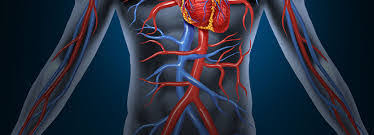Vascular Injury Treatment Highly Depends Upon the Location/Site of the Injury
Vascular injury treatment should take place within the context of the overall resuscitation of the patient according to the principles of the advanced trauma life support protocols. Sometimes, the diagnosis of invasive injury can be made by physical examination alone. In the case of multiple injuries, the decision is made jointly by medical experts, deciding which problems need to be dealt with most immediately. These specialists include neurosurgeons, orthopedic surgeons, and trauma surgeons, among others.
Vascular injury treatment is a surgical procedure designed
to help repair damaged arteries and blood vessels that have been damaged due to
diseases, aging, or injury. This procedure is used in many different types of
cardiovascular disease. The procedure is also used in the treatment of
malignant tumors, as well as inflammatory diseases of the heart such as heart
sclerosis and myocardial infarction. Endovascular procedures are usually
performed on an outpatient basis, although in some cases, some extreme heart
conditions may require hospitalization.
However, vascular injury treatment highly depends on the
location of the injury. Bleeding, pain, swelling, numbness, and weakness are
some of the common symptoms. Elevation of the injury followed by a pressure dressing
is the initial treatment, whereas further treatment options include wound care,
wound repair, and also surgery is carried out to restore the injured arteries. Doppler
ultrasound, MRI angiography, and CT scanning of the abdomen are some of the
tests recommended to determine the location and severity of arterial injury.
With the increasing prevalence of vascular diseases and the
growing geriatric population across the world, the demand for vascular injury
treatment is also increasing at a rapid pace. For instance, in the United
States, around 8.5 million people suffer from peripheral artery disease, of
which around 12% to 20% of individuals are over 60 years of age, according to
the Center for Diseases Control and Prevention (CDC). Moreover, the world's
population aged 60 years and older is expected to total 2 billion by 2050,
according to the World Health Organization.


Comments
Post a Comment